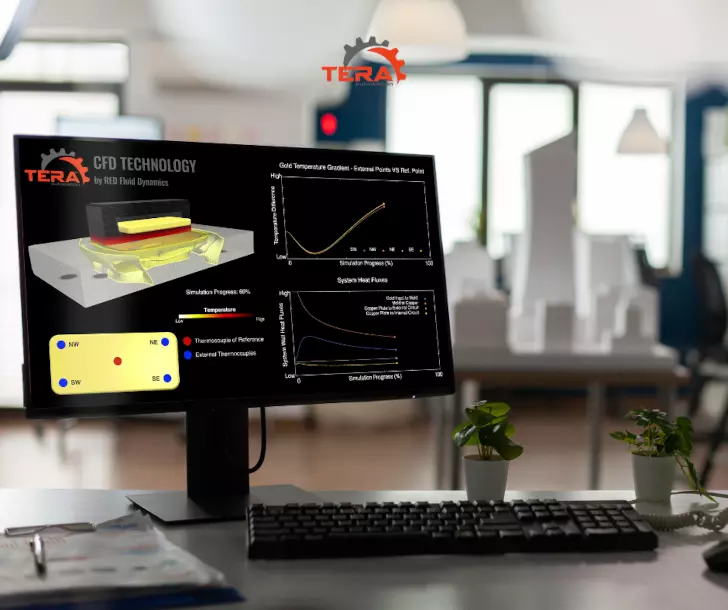
THERMO FLUID DYNAMIC SIMULATION AND INDUSTRIAL DESIGN
For industrial design in general – and for the precious metals sector in particular – digital processes and tools are increasingly important. These resources, in fact, offer the possibility of increasing the level of detail of the project and carrying out real simulations.
Relying on virtual testing environments makes it possible to thoroughly analyse increasingly complex products, prevent errors and optimise resources.
On of the most innovative tools currently available is Computational Fluid Dynamics (CFD), the study of fluid dynamics using computers. Let’s take a look at the opportunities it offers and how it constitutes a strategic advantage for tunnel furnaces design.
What do we mean by fluid dynamics simulation?
Let us start with an example of fluid dynamics simulation that we are all familiar with: weather forecasting. In fact, meteorology was one of the first sciences to make use of computational fluid dynamics to study and predict different phenomena.
Thanks to computational fluid dynamics (CFD) simulation tools, it is possible to create an environment in which to reproduce physical conditions and laws applied to fluids, investigating in various typical quantities such as:
- pressure
- temperature
- mass and energy exchanges
- chemical reactions
A thermo fluid dynamic simulation is therefore a study that calls into question all the factors involved in the process to determine the possible consequences.
Why rely on Computational Fluid Dynamics?
As you can easily guess, the advantages of using computational fluid dynamics (CFD) are many.
First of all, CFD offers us the possibility of knowing in advance the performance of the product and whether or not it meets the required specifications. This is even more important if the phenomena to be investigated are complex or occur in environments that are inaccessible to direct observations.
CFD is a tool that increases designers’ awareness on several fronts, because it enables them to understand the link between technical specifications and product functionality. As a result, it puts them in a position to design increasingly high-performance and competitive products, significantly limiting errors and waste.
Prototyping may be a costly investment for the company, which is almost completely eliminated when we rely on CFD. Think, for example, of the industry of tunnel furnaces for melting precious metals in which each test can literally cost gold.
CFD, on the other hand, allows us to arrive to the prototyping phase with a product that is really close to being placed on the market. Thanks to this innovative simulation tool, indeed, all possible design errors will have already been anticipated and corrected.
Including CFD in the production process therefore makes it possible to:
- meet time-to-market targets
- increase the product quality level
- reduce production costs by almost 20%.
Thermo fluid dynamic simulation for precious metal melting
The melting of precious metals is a very delicate process that calls into play several actors: air, materials, and of course high temperature. In addition to this, the bullion market demands very high quality standards which can only be achieved through almost maniacal care at every production phase.
An induction furnace for metals, therefore, must be capable of producing high-quality gold and other precious metals ingots, perfectly uniform in size, shape and shine, while working at full capacity.
During the melting and cooling phase, there are several factors to consider, namely
- precious metal
- graphite ingot mold
- induction furnace
- cooling plate
Given the high number of interactions between these different elements, we commissioned Red Fluid to simulate the cooling and ingot-forming process using a CFD model with conjugate heat transfer between the cooling plate and the ingot mould.
Thanks to an intuitive graphic representation, the heat transfer from the ingot to the cooling circuits was immediately understandable. This allowed us to consider possible changes in the design of the cooling plate even before the prototype was made.
CFD was of paramount importance to us to save time and money and to visualise a process we already knew but had never investigated through a graphical representation supported by analytical data.
For us at Tera Automation, investing in automation also means investigating processes specifically by relying on the most innovative technologies. Our goal? To make our induction furnaces for metals ever more efficient in terms of quality and consumption.
